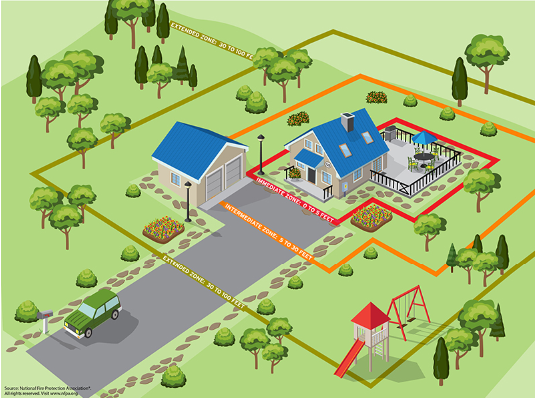
Wildfire Prevention
Arizona’s beautiful desert landscape is a place of natural wonder, but it is also highly vulnerable to wildfires. As a rural town surrounded by open spaces and native vegetation, it is crucial that we take proactive steps to reduce fire risks and protect our homes, businesses, and natural environment. Here’s what you need to know about wildfire prevention and preparedness in our community.
When Fire Threatens
When a wildland fire approaches your home, your family's safety should be your first concern. Have an evacuation plan in place and practice it, especially if you have young children. Call 911 immediately in the event of a fire.
In cases of a large fire, listen to local radio or news stations for the latest developments and follow recommended actions. Your compliance ensures our ability to protect your home and our community.
Remember, brush fires can start anywhere—in forests, on the sides of roads, in alleyways, even in your backyard. But you can take action to prevent them. Protect your home from urban wildland fires.
Protecting Your Home: Wildfire Prevention Tips

1. Maintain Defensible Space: The 3 R's
Creating defensible space is crucial for protecting your home from wildfires. The Three R’s of Defensible Space are:
Removal – Eliminate dead or highly flammable vegetation.
Reduction – Trim and thin existing vegetation to slow fire spread.
Replacement – Swap out hazardous plants for fire-resistant alternatives.
Most of the homes in our town are situated in desert areas with mostly native plants surrounding the property and with no fencing. We recommend creating a 30-foot area of defensible space. Using the 3 R's (Removal, Reduction, and Replacement), homeowners can create an area free of dried grass or other highly flammable vegetation around the home.
A properly designed and maintained defensible space provides an area where firefighters can position themselves to protect your home. Also, the elimination of potential fuel sources reduces the probability of the house being consumed in a wildfire.
2. Harden Your Home
Install ember-resistant vent covers.
Use Class A fire-rated roofing materials.
Keep gutters and roofs free of debris.
Store firewood at least 30 feet away from structures.
3. Safe Outdoor Practices
Avoid using equipment that creates sparks on windy days.
Never leave campfires unattended and ensure they are completely extinguished.
Dispose of cigarettes properly—never toss them into dry grass.
4. Emergency Preparedness
Sign up for local fire alerts and emergency notifications.
Have an emergency evacuation plan and a go-bag with essentials.
Know multiple routes out of town in case of road closures.
